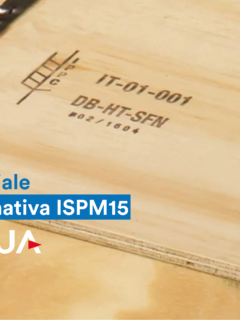Worker safety and environmental protection must be at the centre of the company’s priorities, now more than ever. These issues are closely linked and their importance is underlined by the continuous evolution of regulations governing the industrial and environmental sectors.
RAJA is committed to providing solutions that not only comply with these regulations, but also offer strategic advantages enabling companies to stand out in the market. The use of certified products, for instance, not only ensures compliance with current regulations, but also supports the company’s broader goal of sustainability.
The Reference Standard for Corporate Safety
One of the fundamental aspects of industrial safety and pollution management is understanding and adhering to current regulations.
- Legislative Decree 81/2008 (Occupational Safety Consolidation Act): this legislation represents a milestone for occupational safety in Italy. It consolidated and updated several previous laws, establishing a single regulatory framework for the protection of workers’ health and safety in the workplace.
- ConsolidatedEnvironmental Act (Legislative Decree 152/2006): similar to the Consolidated Safety Act, the TUA brought together and rationalised several existing environmental regulations in Italy. It has been updated several times to incorporate new European directives and respond to emerging needs, such as waste management, water pollution protection and air protection.
- Legislation on Industrial Emissions (Legislative Decree 183/2017): this decree implemented the European Directive on Industrial Emissions (2010/75/EU) in Italy, establishing stricter rules for emissions from large industrial plants, with the aim of reducing pollution and improving air quality.
- Hazardous Substances and Chemical Safety Regulations: Italy, following EU directives such as REACH and CLP (Classification, Labelling and Packaging of Chemicals), has constantly updated its rules to ensure safe and responsible management of chemicals in industries.
These examples illustrate how Italy has responded to both internal stimuli and obligations arising from European agreements and directives by constantly updating its regulations to ensure safe and sustainable working environments. This trend of continuous updating is crucial for companies that need to maintain compliance and incorporate best practices in safety and environmental protection.
Legislative Decree 81/2008 or Standard 81
Legislative Decree 81/2008, commonly known as Norma 81, revolutionised workplace safety in Italy, consolidating more than 400 pre-existing provisions into a single body of legislation. This legislation imposed higher standards for the protection of workers, introducing the DVR or Risk Assessment Document, the planning of preventive activities and the promotion of a safety culture at all company levels. Standard 81 also enhanced the role of the R.S.P. (Prevention and Protection Service Manager), a key figure in the implementation of workplace safety policies.
Environmental Consolidation Act (Law 152/2006) or TUA
In parallel, the Consolidated Environmental Act (Law 152/2006) provided a consolidated legal framework to address contemporary environmental challenges. It not only harmonised the various environmental laws, but also required companies to adopt environmental management systems to monitor and reduce the impacts of their operations. The TUA has extended its influence far beyond just water and air protection, touching on crucial aspects such as waste management and the remediation of contaminated sites, which are essential for the long-term sustainability of industrial activities.
Both regulations have not only defined more stringent obligations and responsibilities, but have also incentivised companies to take proactive steps to continuously improve working conditions and environmental impact. Their impact should be seen not only in terms of compliance, but also as an opportunity for companies to raise their operational and social responsibility standards.
ISO Certifications and their Role
ISO 14001 and ISO 45001 certifications are voluntary but highly effective tools for companies wishing to improve their environmental sustainability and occupational safety practices. These standards, although not mandatory, provide a benchmark of excellence that can help organisations stand out in the marketplace.
ISO 14001 focuses on environmental management. Through this certification, companies can develop a systematic approach to managing the impact of their activities on the environment.
Implementing ISO 14001 means not only reducing costs through more efficient use of resources and optimal waste management, but also improving regulatory compliance by reducing the risk of penalties and potential lawsuits. For companies seeking to expand their presence in international markets, showing a certified commitment to sustainability can open up new business opportunities and strengthen customer and stakeholder confidence.
ISO 45001, on the other hand, focuses on occupational safety and health. Introduced in 2018, it replaces the previous standard OHSAS 18001 and lays the foundation for a safer and healthier work environment. Adopting ISO 45001 can lead to a significant reduction in occupational accidents and illnesses. This not only improves productivity by reducing lost working hours, but also the corporate image. Proactive management of occupational risks shows a commitment to employee welfare, attracting talent and maintaining a motivated and satisfied working environment.
Both certifications require regular and systematic risk assessment, implementation of standard operating procedures and a continuous commitment to improvement. By implementing management systems that meet ISO standards, companies not only respond more effectively to environmental and safety challenges, but also establish a corporate culture that places responsibility and care at the centre. This continuous improvement process not only optimises current operations, but also prepares the organisation to respond nimbly to future changes in regulations and market expectations.
The Role of the HSE Manager
The HSE Manager, or Safety, Health and Environmental Manager, is a key professional figure within modern companies. This role requires an in-depth knowledge of occupational safety and environmental protection regulations as well as relevant ISO standards, such as ISO 14001 and ISO 45001. The main task of the HSE Manager is to ensure that the company not only complies with applicable laws, but also adopts best practices to minimise occupational and environmental risks.
The HSE Manager’s responsibilities include risk assessment, developing and implementing safety policies and procedures, employee training and emergency management. This professional is also responsible for regularly monitoring the working environment and proposing continuous improvements, ensuring that all operations are conducted in a safe and environmentally friendly manner.
A concrete example of the HSE Manager’s work is working with companies such as RAJA to create business development plans that not only meet immediate compliance needs, but also lay the groundwork for continuous improvement in safety and sustainability performance.
Products and Solutions for Safety and Pollution Control
A fundamental aspect of safety and antipollution management in the industrial environment is the use of specific products that help mitigate risks and respond effectively to emergencies. Products such as gloves, masks, safety shoes and kits for the containment and neutralisation of hazardous substances are essential in many work contexts. For example, the absorbent neutraliser Solforless is an indispensable product for companies using lead-acid batteries, mandatory since 2011 to effectively neutralise sulphuric acid.
RAJA not only provides the necessary products, but also offers comprehensive advice that includes:
- help with risk assessment
- specific training in the correct use of the devices
- implementation of appropriate emergency procedures.
This integrated approach ensures that companies not only comply with current regulations, but also adopt best practices to ensure the safety and sustainability of their operations.
In addition, RAJA helps companies to be proactive, not just reactive, through services that enable them to continuously assess and improve their safety and environmental practices. For example, by providing ongoing, up-to-date training on safety standards and anti-pollution techniques, companies can anticipate problems before they become emergencies.
The importance of an integrated approach to safety andanti-pollution cannot be emphasised enough in the modern industrial environment. RAJA is committed to providing not only high-quality products but also comprehensive solutions that meet the safety and sustainability needs of companies. Collaboration with experts and the adoption of standards such as ISO 14001 and ISO 45001 are key steps towards creating safer and more environmentally friendly working environments.
We are available to assist you on the path to safer and more sustainable business management, offering advice, training and innovative products to suit your specific needs.














